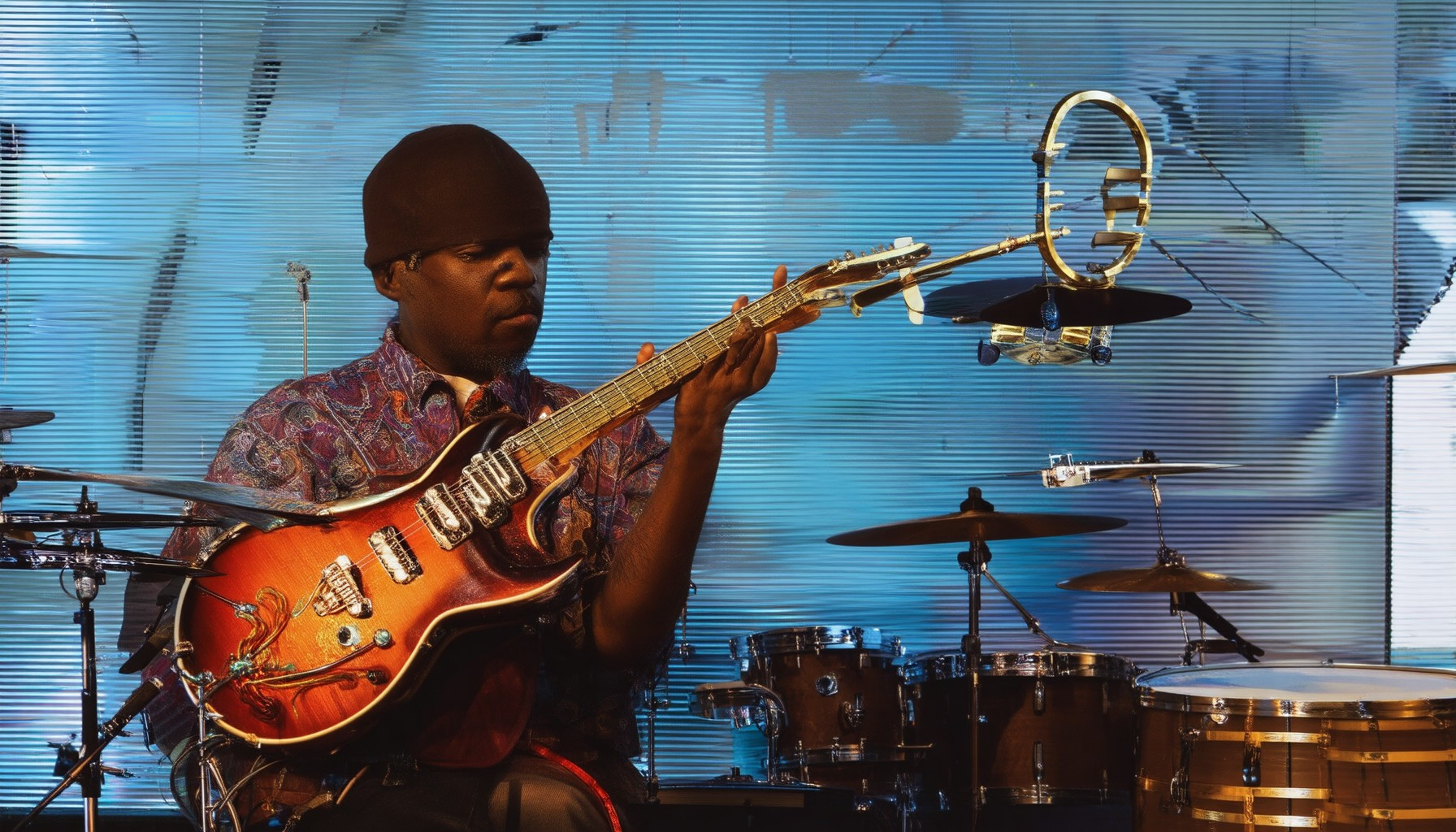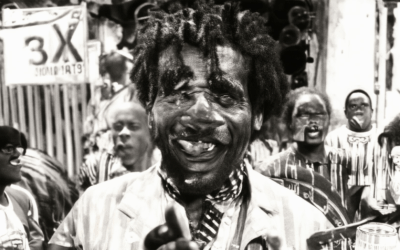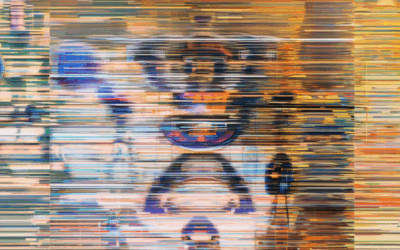Funk music, a vibrant and dynamic genre, has long been a cornerstone of music history, blending elements of rhythm, melody, and harmony to create a unique soundscape. At its core, funk music relies heavily on a variety of instruments that work together to create its signature grooves and energy. From the deep, resonant basslines that form the backbone of the genre to the high-energy drum beats that drive the rhythm, each instrument plays a crucial role in shaping the funk sound. Over time, these instruments have evolved, adapting to technological advancements and shifting musical trends, resulting in a rich tapestry of sounds that continue to influence contemporary music. This article delves into the essential role of funk music instruments, exploring their evolution, significance, and the creative techniques that make them indispensable to the genre.
Key Takeaways
– Funk Music Origin and Defining Features: A genre born in the mid-1960s, funk is characterized by its driving rhythm, syncopated basslines, and on-beat percussion, creating a unique groove.
– Instrumental Roles: The bass and drums are central, with the bass often doubling as a lead instrument, while drums provide intricate patterns and solos.
– Vocal Styles and Energy: Funk vocals often feature call-and-response patterns, adding energy and complexity, with a sense of fun and humor.
– Evolution and Innovation: Funk evolved over time, influencing genres like hip-hop, jazz fusion, and rock, while maintaining its roots in African American musical traditions.
– Influential Artists: Icons like James Brown and George Clinton pioneered funk, shaping its identity and leaving a lasting legacy.
– Impact on Genres: Funk’s profound impact on music spans hip-hop, jazz fusion, and rock, solidifying its place as a foundational genre.

What Instruments Are Used in Funk Music?
Funk music is characterized by its infectious grooves, syncopated rhythms, and bold instrumentation. Here are the primary instruments commonly associated with funk:
- Bass Guitar : The bass is often the backbone of funk music, playing a crucial role in establishing the rhythmic foundation and delivering the low-end thump that defines the genre.
- Drum Set : Funk drumming is legendary, with beats that are fast, loose, and dynamic. Drummers often use a combination of sticks and brushes to create the signature funky drum pattern.
- Electric Guitar : Guitars are frequently featured in funk, often playing lead roles with sharp, melodic riffs or providing rhythmically supportive chords.
- Keyboards/Organs : Pianos, Hammond organs, and synthesizers add a smooth, jazzy texture to funk, often providing the melodic and harmonic elements that complement the bass and drums.
- Vocals : Singers and vocal groups are common in funk, contributing powerful, soulful leads and harmonies that enhance the music’s emotional impact.
- Horns : Trumpets, trombones, and saxophones are occasionally used to add a bold, brassy element to funk tracks, giving them a sense of urgency and excitement.
What Are the Musical Elements of Funk?
Funk music is a genre characterized by its distinctive rhythmic complexity and groovy basslines. Below are the key musical elements that define funk:
- Syncopation : Funk relies heavily on syncopation, where the rhythm is emphasized on the offbeat rather than the beat. This creates a driving, propulsive feel.
- Rhythmic Patterns : Funk often features intricate rhythmic patterns played by the drums and percussion, with a strong emphasis on the backbeat and sixteenth-note subdivisions.
- Melodic Elements : Funk melodies are typically blues-based and often incorporate call-and-response patterns between instruments and vocals.
- Harmonic Structures : Funk music frequently uses seventh chords and diminished seventh chords, giving it a raw, edgy sound. These harmonies are often played in a loose, non-functional way.
- Instrumental Features : The bassline plays a central role in funk, often doubling as the rhythmic anchor and melodic voice. Bassists like Bootsy Collins and Larry Graham are renowned for their virtuosic playing.
- Groove : The “funk groove” is a hallmark of the genre, created through tight ensemble playing and a sense of collective rhythm.
Notable funk artists include James Brown, George Clinton, and Curtis Mayfield, whose work exemplifies these musical elements. Funk has significantly influenced various genres, from hip-hop to jazz fusion, and remains a cornerstone of Black music culture.

The Backbone of Funk Music
In funk music, the bass guitar is often regarded as the backbone due to its prominent role in driving the rhythm and melody. The deep, thumping basslines are a hallmark of the genre, providing the foundation upon which the rest of the music is built. This instrument is capable of both melodic and percussive elements, making it essential for creating the distinctive funk groove.
Funk’s origins in African American culture, particularly through artists like James Brown, heavily relied on the bass to convey emotion and energy. The bass guitar’s versatility allows it to take center stage, whether playing intricate patterns or supporting harmonic structures, thus solidifying its position as a cornerstone of funk music.

Funk Music: Key Features and Characteristics
Funk is a genre of music that originated in the mid-1960s among African American communities in the United States, particularly in cities like New Orleans and Los Angeles. It is characterized by its strong rhythm and grooves, syncopated basslines, and intricate drum patterns. Below are the primary features that define funk music:
Syncopated Basslines
- The bassline in funk often plays a dominant role, with a walking bassline that moves independently of the regular beat.
- This syncopation creates a sense of tension and release, giving the music its signature feel.
On-Beat Percussion
- Funk drumming often emphasizes on-beat hits, particularly on the snare drum, to create a driving rhythm.
- This approach contrasts with the backbeat commonly found in rock music, contributing to funk’s unique groove.
One-Chord Progressions
- Funk songs frequently use one-chord progressions, allowing for extended solos and improvisation.
- This simplicity allows the focus to remain on the rhythm and ensemble interaction, rather than chord changes.
Complex Rhythms
- Funk incorporates offbeat rhythms and polyrhythms, making it challenging to play but highly danceable.
- These rhythms are often layered to create a dense and dynamic sound.
Vocal Style
- Funk vocals often feature call-and-response patterns between the lead vocalist and the backing singers.
- This interactive style adds energy and complexity to the music, with the singer often responding to the instrumentalists.
Energetic and Humorous Vibe
- Funk music carries an infectious energy and sense of fun, often with humorous or playful lyrical content.
- Lyrics in funk can be witty, satirical, or simply lighthearted, reflecting the social and cultural experiences of the era.
Storytelling Through Lyrics
- Many funk songs tell stories or convey messages about life, love, and social issues, often with a sense of authenticity.
- The lyrics are delivered with a raw honesty, adding emotional depth to the music.
What Are the Fundamentals of Funk Music?
Funk music emerged in the mid-1960s, characterized by its distinctive rhythm and style. Here are the core elements that define funk:
1. Rhythm and Groove
Funk is deeply rooted in a driving, hypnotic rhythm. The backbone of funk lies in the downbeat , with a heavy emphasis on the first beat of every measure—the “One.” This pulse is often accompanied by syncopated rhythms, where notes fall on the off-beat, creating a sense of tension and release.
2. Instruments and Roles
Funk music typically features a bassline that plays a central role, often doubling as a lead instrument. The drums are crucial, providing the foundation with intricate patterns and solos. Other common instruments include guitar , keyboards , and vocals , which often deliver raw, emotional performances.
3. Themes and Influences
Funk music frequently addresses social and personal struggles, reflecting the civil rights movement and urban experiences. Artists like James Brown and George Clinton explored themes of empowerment, love, and resilience. Funk also drew inspiration from African American musical traditions, blending blues, jazz, and gospel into a unique sound.
4. Influence on Genres
Funk has profoundly shaped subsequent music genres, including hip-hop , jazz fusion , and rock . Its rhythmic complexity and improvisational nature laid the groundwork for innovative artists and bands that followed.
To explore funk further, check out our articles on the history of funk and its most impactful artists .

What’s the FunKiEst Song Ever?
The term “funkiest” is subjective, but certain songs stand out for their unique beats, grooves, and overall energy. Here’s a curated list of iconic tracks that embody the essence of funk:
- James Brown – Papa’s Got a Bag of Rice
- The Rolling Stones – Brown Sugar
- Daft Punk – Get Lucky
- Whitney Houston – I Want to Dance with Somebody
- Justin Timberlake – Can’t Stop the Feeling!
- Mark Ronson feat. Bruno Mars – Uptown Funk
- Michael Jackson – Smooth Criminal
- 50 Cent – Candy Shop
- Snap! – Rhythm Is a Dancer
- Otis Redding – Soul Man
- Jazzanova – Feels Like Summer
- Funk Inc. – Mayday
- Lee Dorsey & The Meters – Give It Up
- Parliament – Up the Convoy
- Brownout – Mr. Fingers
- Curtis Mayfield – We Got to Have Peace
- Chaka Khan – I’m Every Woman
- Boyz II Men – Pocoyo
- Red Hot Chili Peppers – Funky Cold Steel
- Earth, Wind & Fire – Let’s Groove
- Stevie Wonder – Superstition
- Kool & the Gang – Love Love Love
- Johnny “Guitar” Watson – I Need to Be Loved
- Harold Melvin & The Blue Notes – The Love I Lost
- Donnie Hathaway – This Is an Easier Question Than It Looks Like
- Aretha Franklin – Respect
- Etta James – Spoonful
- Janis Joplin – Mercedes Benz
- Vanessa Williams – Save the Best for Last
- Alicia Keys – No One
- Bruno Mars – Locked Out of Heaven
- Sam & Dave – Soul Man
- Al Green – Let’s Stay Together
- Barry White – I’m Gonna Love You Just on Account of That Devil Music
- Bill Withers – Ain’t No Sunshine
- Ray Charles – What’d I Say
- Little Richard – Tutti Frutti
- Chuck Berry – Johnny B. Goode
- Elvis Presley – Hound Dog
- Paul Revere & The Raiders – Goodnight, Sweet Love
- Steely Dan – Reelin’ in the Years
- Weather Report – Beaver Stretch
- Mandrill – Fat City Strut
- Black Heat – Wanaoh
- Albert King – Born Under a Bad Sign
- Howlin’ Wolf – Howlin’ for My Baby
- Lightnin’ Hopkins – Mojo Hand
- Mississippi Slim – Caledonia
- Big Joe Turner – Shake, Shake, Shake
- Amos Milburn – Little Red Rooster
- Wade Boggs – Key to the Kingdom
- Lonnie Liston – (I’m a) Happy Boy
- Johnny Burnside – You Don’t Love Me
- Wild Kittens – Don’t Tell Her
- Marva Wright – What’s Going On
- Jackie Wilson – To Be Young, to Be Beautiful
- Gene Chandler – Break Away
- Nancy Wilson – Can’t Take My Eyes Off You
- Freddie King – Come Together
- Eric Clapton – Crosstown Traffic
- Steve Winwood – Can’t Find Another Fool
- Tom Petty – American Girl
- Bob Seger – Against the Wind
- Golden Earring – Radar Love
- Blue Öyster Cult – (Don’t Fear) The Reaper
- Thin Lizzy – The Boys Are Back in Town
- AC/DC – Highway to Hell
- Queen – We Are the Champions
- KISS – Rock and Roll
- Van Halen – Runnin’ with the Devil
- Guns N’ Roses – Welcome to the Jungle
- Aerosmith – Sweet Emotion
- Black Sabbath – Paranoid
- Deep Purple – Smoke on the Water
- Iron Maiden – Speed of the Ghost
- Judas Priest – Breaking the Law
- UFO – Rock ‘n’ Roll Love Affair
- Black Diamond – Goin’ for the Gold
- Scorpions – Dynamite
- Ozzy Osbourne – Crazy Train
- Metallica – Enter Sandman
- Megadeth – Hangem All
- Slayer – Raining Blood
- Anthrax – Caught in a Lie
- Iron Maiden – The Number of the Beast
- Judas Priest – Diamonds and Rust
- Deep Purple – Perfect Strangers
- Rainbow – Since You Been Gone
- Whitesnake – Here I Go Again
- Van Halen – Jump
- ZZ Top – La Grange
- Stevie Ray Vaughan – Voodoo Child
- Eric Johnson – Cliffs of Dover
- Steve Morse – Morse Code
- Yngwie J. Malmsteen – Rising Force
- Racer X -Scarified
- Extreme – More Than Words
- Pantera – Cowboys from Hell
- Sepultura – Roots
- Slayer – Repentance
- Megadeth – Trust
- Iron Maiden – The Trooper
- Judas Priest – Painkiller
- Black Sabbath – Paranoid
- Deep Purple – Smoke on the Water
- Iron Maiden – Speed of the Ghost
- Judas Priest – Breaking the Law
- UFO – Rock ‘n’ Roll Love Affair
- Black Diamond – Goin’ for the Gold
- Scorpions – Dynamite
- Ozzy Osbourne – Crazy Train
- Metallica – Enter Sandman
- Megadeth – Hangem All
- Slayer – Raining Blood
- Anthrax – Caught in a Lie
- Iron Maiden – The Number of the Beast
- Judas Priest – Diamonds and Rust
- Deep Purple – Perfect Strangers
- Rainbow – Since You Been Gone
- Whitesnake – Here I Go Again
- Van Halen – Jump
- ZZ Top – La Grange
- Stevie Ray Vaughan – Voodoo Child
- Eric Johnson – Cliffs of Dover
- Steve Morse – Morse Code
- Yngwie J. Malmsteen – Rising Force
- Racer X – Scarified
- Extreme – More Than Words
- Pantera – Cowboys from Hell
- Sepultura – Roots
- Slayer – Repentance
- Megadeth – Trust
- Iron Maiden – The Trooper
- Judas Priest – Painkiller
- Black Sabbath – Paranoid
- Deep Purple – Smoke on the Water
- Iron Maiden – Speed of the Ghost
- Judas Priest – Breaking the Law
- UFO – Rock ‘n’ Roll Love Affair
- Black Diamond – Goin’ for the Gold
- Scorpions – Dynamite
- Ozzy Osbourne – Crazy Train
- Metallica – Enter Sandman
- Megadeth – Hangem All
- Slayer – Raining Blood
- Anthrax – Caught in a Lie
- Iron Maiden – The Number of the Beast
- Judas Priest – Diamonds and Rust
- Deep Purple – Perfect Strangers
- Rainbow – Since You Been Gone
- Whitesnake – Here I Go Again
- Van Halen – Jump
- ZZ Top – La Grange
- Stevie Ray Vaughan – Voodoo Child
- Eric Johnson – Cliffs of Dover
- Steve Morse – Morse Code
- Yngwie J. Malmsteen – Rising Force
- Racer X – Scarified
- Extreme – More Than Words
- Pantera – Cowboys from Hell
- Sepultura – Roots
- Slayer – Repentance
- Megadeth – Trust
- Iron Maiden – The Trooper
- Judas Priest – Painkiller
- Black Sabbath – Paranoid
- Deep Purple – Smoke on the Water
- Iron Maiden – Speed of the Ghost
- Judas Priest – Breaking the Law
- UFO – Rock ‘n’ Roll Love Affair
- Black Diamond – Goin’ for the Gold
- Scorpions – Dynamite
- Ozzy Osbourne – Crazy Train
- Metallica – Enter Sandman
- Megadeth – Hangem All
- Slayer – Raining Blood
- Anthrax – Caught in a Lie
- Iron Maiden – The Number of the Beast
- Judas Priest – Diamonds and Rust
- Deep Purple – Perfect Strangers
- Rainbow – Since You Been Gone
- Whitesnake – Here I Go Again
- Van Halen – Jump
- ZZ Top – La Grange
- Stevie Ray Vaughan – Voodoo Child
- Eric Johnson – Cliffs of Dover
- Steve Morse – Morse Code
- Yngwie J. Malmsteen – Rising Force
- Racer X – Scarified
- Extreme – More Than Words
- Pantera – Cowboys from Hell
- Sepultura – Roots
- Slayer – Repentance
- Megadeth – Trust
- Iron Maiden – The Trooper
- Judas Priest – Painkiller





0 Comments